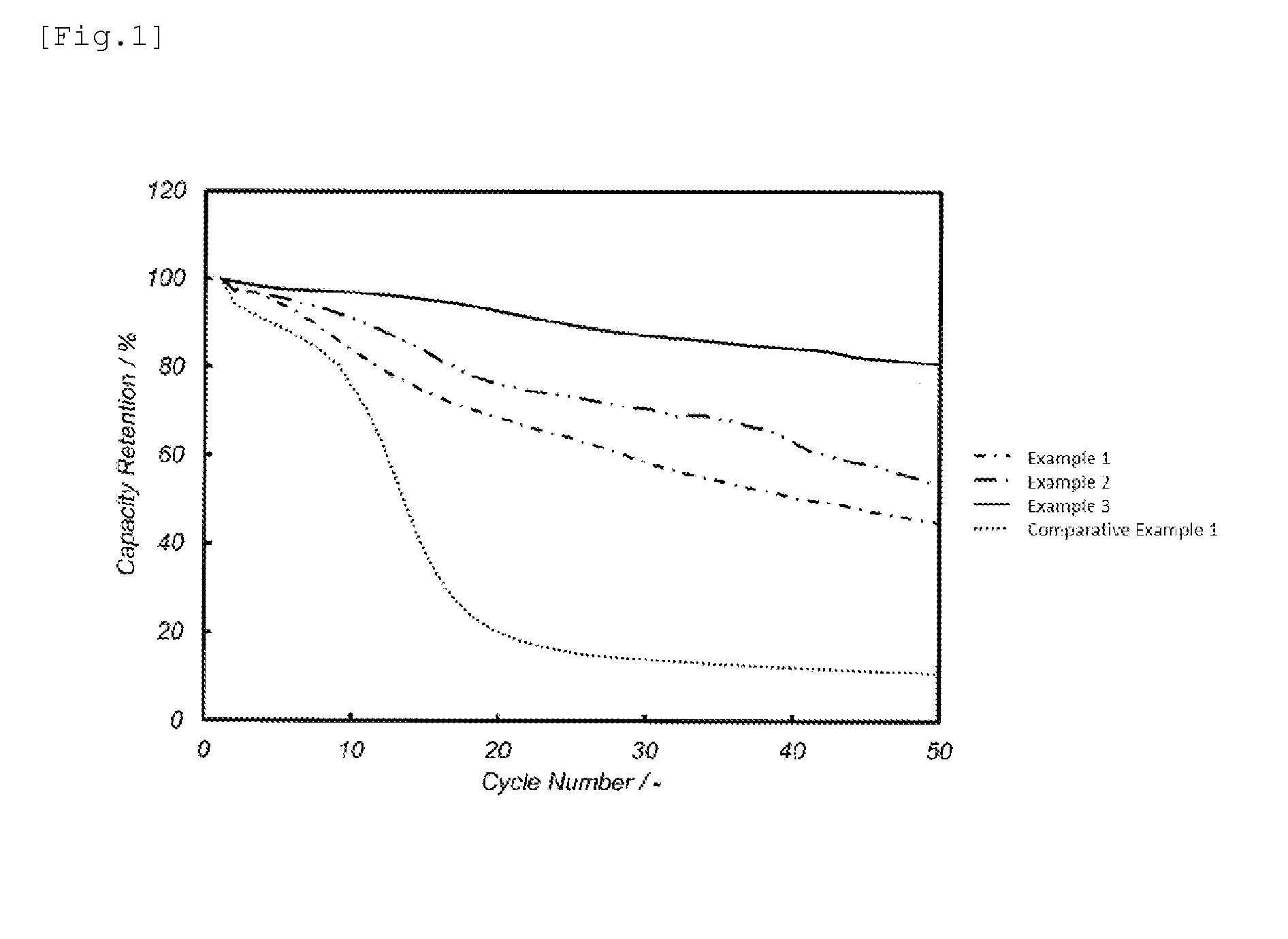Negative Electrode Active Material for Nonaqueous Electrolyte Secondary Batteries
a secondary battery and active material technology, applied in the field of negative electrode active materials, can solve the problems of low electron conductivity, silicon-based active materials, and active materials already reaching the theoretical limit in terms of capacity, so as to promote battery cycle characteristics, increase the capacity of batteries, and improve the effect of reactivity
- Summary
- Abstract
- Description
- Claims
- Application Information
AI Technical Summary
Benefits of technology
Problems solved by technology
Method used
Image
Examples
example 1
(1) Production of Negative Electrode Active Material
[0115]An ingot of silicon (Si) was heated to melt, and the molten liquid that had been heated to 1600° C. was subjected to steam explosion atomization using the apparatus described in FIG. 2 of WO 01 / 081033. At this time, the inner diameter of the cylindrical mixing nozzle 2 was set to 2.0 mm, and the amount of the coolant circulating in the mixing nozzle was set to 100 L / min. Water at room temperature was used as the coolant. A molten liquid of silicon was dropped (free-fall dropping) into the mixing nozzle 2 in an amount of 13 g each. The cooling rate at this time was estimated to be 106 K / s to 108 K / s according to the estimation method described above.
[0116]The silicon powder obtained by the steam explosion atomization was further subjected to particle size adjustment using a jet mill pulverizer in a nitrogen atmosphere (air in an amount of less than 1%, the balance being nitrogen vaporized from liquefied nitrogen (purity 99.999...
examples 2 to 7
[0121]Negative electrode active materials were obtained in the same manner as in Example 1, except that the proportion of nitrogen and air of the atmosphere at the time of jet mill pulverization was changed, and also, the degree of pulverization was changed. The D50 and the amount of water / CS of these materials are presented in the following Table 1.
[0122]Furthermore, negative electrodes were obtained in the same manner as in Example 1, except that at the time of preparing the negative electrode mixture, the mixing mass ratio of the fine silicon powder and graphite was changed to fine silicon powder:graphite=50:50 in Examples 2 and 3, and to fine silicon powder:graphite=10:90 in Examples 4 to 7.
example 8
(1) Production of Negative Electrode Active Material
[0123]An ingot of silicon (Si) was heated to melt, and the molten liquid that had been heated to 1600° C. was subjected to a micronization treatment by a steam explosion atomization method using the apparatus described in FIG. 2 of WO 01 / 081033. At this time, the inner diameter of the cylindrical mixing nozzle 2 was set to 2.0 mm, and the amount of the coolant circulating in the mixing nozzle was set to 100 L / min. Water at room temperature was used as the coolant. A molten liquid of silicon was dropped (free-fall dropping) into the mixing nozzle 2 in an amount of 13 g each. The cooling rate at this time was estimated to be 106 K / s to 108 K / s according to the estimation method described above.
[0124]The powder obtained by the steam explosion atomization was subjected to jet mill pulverization in a nitrogen atmosphere, and thus a negative electrode active material (D50: 2.5 μm) was obtained. The amount of water / CS at that time was 31 ...
PUM
| Property | Measurement | Unit |
|---|---|---|
| laser diffraction particle size distribution analyzer | aaaaa | aaaaa |
| particle size | aaaaa | aaaaa |
| particle size | aaaaa | aaaaa |
Abstract
Description
Claims
Application Information
 Login to View More
Login to View More - R&D
- Intellectual Property
- Life Sciences
- Materials
- Tech Scout
- Unparalleled Data Quality
- Higher Quality Content
- 60% Fewer Hallucinations
Browse by: Latest US Patents, China's latest patents, Technical Efficacy Thesaurus, Application Domain, Technology Topic, Popular Technical Reports.
© 2025 PatSnap. All rights reserved.Legal|Privacy policy|Modern Slavery Act Transparency Statement|Sitemap|About US| Contact US: help@patsnap.com



